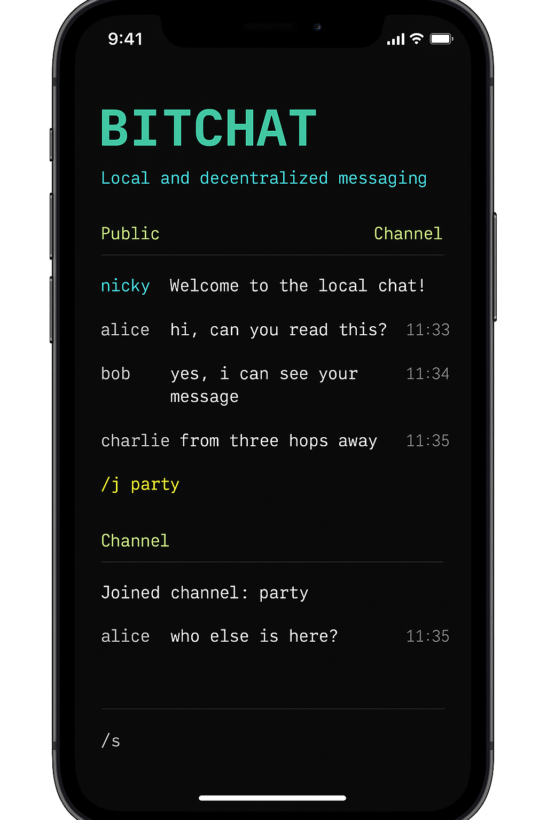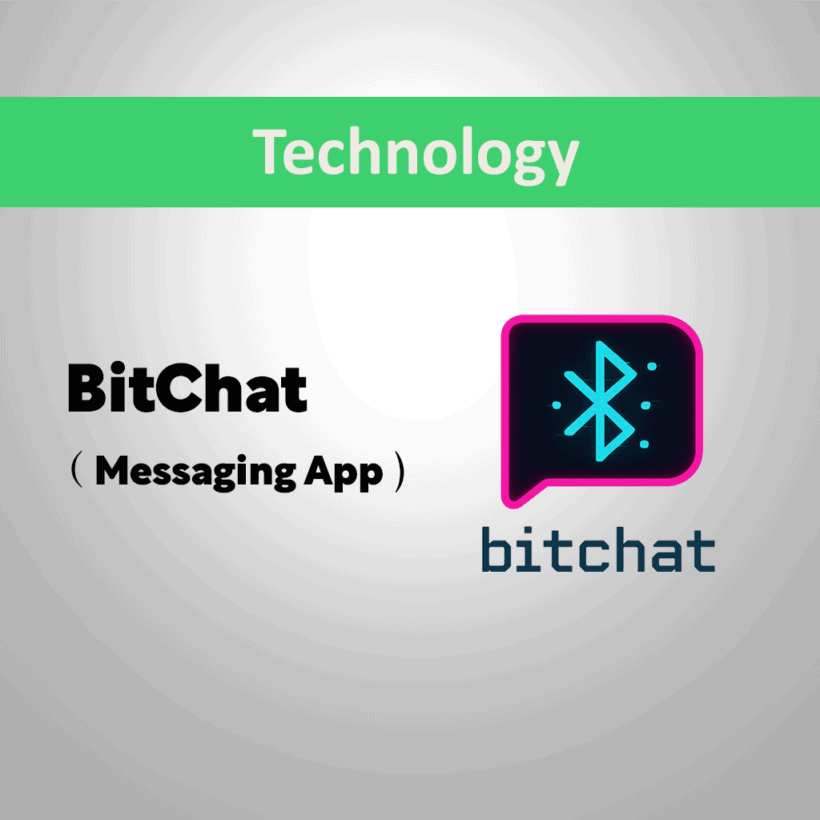Bitchat, a messaging app created by Twitter and Block founder Jack Dorsey, is available to download from the iOS App Store. Dorsey says he coded the basis of the app over the course of a weekend in early July.
Bitchat operates through Bluetooth mesh networks, which means that users can send messages to others within the range of Bluetooth connectivity – usually around 100 meters – without cell reception or a Wi-Fi connection.
How BitChat Works? A Deep Dive
Bitchat, the latest experimental project from Twitter co-founder Jack Dorsey, is not your typical messaging app. Unlike WhatsApp, Signal, or Telegram, Bitchat operates completely offline. It doesn’t require the internet, cellular service, or even a Wi-Fi network. Instead, it uses a mesh network built on Bluetooth technology to allow encrypted, peer-to-peer communication between nearby devices.The app is an exercise in alternative communication protocols—open source, privacy-focused, and server-free. But how does it all work?
At the heart of Bitchat is Bluetooth Low Energy (BLE) mesh networking. In a normal app, messages flow between servers in data centers. With Bitchat, your message bounces from phone to phone via Bluetooth, flowing through a network of connected devices until it arrives. Every phone running Bitchat serves as a node in a local mesh network. Your message will get through if your intended recipient is out of range in direct Bluetooth visibility, as long as there are intermediate Bitchat users in the way, creating a multi-hop path. This mechanism enables messages to go much farther than the short range of Bluetooth by itself, usually several hundred meters depending on how many participating devices are present.
When a message is formed in Bitchat, it has a destination identifier—a public key for direct messages or a channel name if it’s for group chat. Both types of messages also have metadata like the time-to-live (TTL) value, which dictates how many hops it can do before it’s discarded. This ensures messages don’t loop forever. As the message travels through every device, the TTL is decreased, and when it hits zero, the message is no longer relayed.
Security is one of the core design precepts in Bitchat. In one-to-one private chats, the application employs a suite of contemporary cryptographic methods: Curve25519 for public-key exchange, AES-GCM for encryption, and Ed25519 for digital signatures. These guarantee that the message can only be read by the intended recipient and that no one is able to pretend to be another user. Messages may be password-protected in group chats or channels. Upon joining a channel, the password will be utilized to calculate a secure key based on a key derivation function named Argon2id. This password is then employed in encrypting messages exchanged in that channel such that only those who possess the password are in a position to decrypt and join in.
Bitchat’s interface betrays its experimental and minimalist character. Instead of snazzy graphics or profile images, it offers users a plain, nostalgic-looking console where they enter commands not dissimilar to those supported in vintage IRC chat programs. For instance, to join a channel, one types /j channelname. To send an im, the command is /m username. There are other commands that enable people to password-protect channels, save chats, or clear data. This bare-bones interface is intentional: the app minimizes form in favor of function, emphasizing performance, anonymity, and reliability where other tools would break down.
In the background, Bitchat has advanced logic to ensure it remains efficient in its mesh network. The messages are compressed with LZ4 to reduce size and increase transmission rate over Bluetooth’s restricted bandwidth. Devices hold short-term message ID memory in data structures such as Bloom filters to avoid sending the same message repeatedly. This helps eliminate spam and minimize unnecessary duplication within the network. If it is not possible to deliver a message at once—for instance, when the receiver isn’t within range—it might be temporarily held on intermediary devices. Upon later coming into proximity with one of these relays, the message is delivered, even if considerable time has passed. This “store-and-forward” approach is central to making the system more asynchronous and reliable.
One of the most interesting things about Bitchat is its focus on privacy by design. The app does not involve any signup process—no phone numbers, no email addresses, and no cloud accounts. Users are only addressed by cryptographic public keys. No central server or company can monitor who’s chatting with whom, what they’re saying, or when they’re saying it. Furthermore, messages are temporary by default, in the sense that they’re not stored persistently. And for emergency or risk of device confiscation, users can triple-tap on the app’s icon to engage “panic mode,” which deletes all local data at once.

Conclusion
Although still experimental procedures, Bitchat represents a thrilling new category of messaging: truly infrastructure-free, open protocol, and encrypting user autonomy. As it evolves, it holds potential to reshape how we think about resilient and private digital communication.


